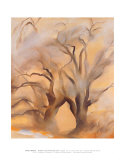|
A desert, with its very dry environment with extreme temperatures, has limited animal and plant life. The biggest desert: Sahara (Africa); driest: Atacama (Chile) and Lut (Iran); coldest: Gobi (Asia) and the desert on the Antarctica continent.
Desert Biome Poster Text: Deserts are harsh environments found all around the world, covering about one-fifth of the planet. Characterized by low rainfall, deserts receive less than 25 centimeters of rain per year. While most are swelteringly hot, such as the Australian Desert, a few, like the Gobi Desert in Asia can get very cold. Desert temperatures might also drop at night, and can plunge below freezing during the winter season. Despite the lack of water and other extreme conditions, most deserts are home to many species of plants and animals.
Life native to the desert is highly specialized and well-adapted to the extreme climate. Sagebrush, short grasses, creosote bushes and cacti are just a few of the plants found there. Desert plants have root and water storage systems ideal for minimizing moisture loss. Within hours of rainfall, desert plants bloom, reproduce, and store water needed for the coming drought.
The desert is home to many reptiles, insects, birds and some small mammals, such as the kangaroo mice in North America. The animals surviving in the desert have evolved perfectly to suit the climate. Most desert animals are nocturnal, sheltering themselves from the sun during the day, either in shade or burrows. A unique physical adaptation is the storage of fat in humps or tails, rather than throughout the body, as fat causes heat to intensify. The absence of sweat glands, and the concentration of urine, are other physical adaptations.
• “In the great desert of northern Arizona the traveller, threading his way across a sage-brush and cacti plain shut in by abrupt-sided shelves of land rising here and there some hundreds of feet higher, suddenly comes upon a petrified forest.” Percival Lowell, Mars as the Abode of Life (1908)
|









